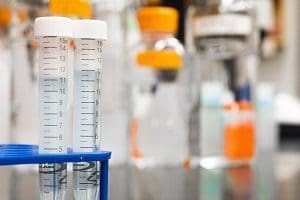
ECHA Propose to Add 18 Substances to REACH Annex XIV


- Bisphenol A – used to make epoxy resins, polycarbonate and many other polymers, adhesives and paints.
- Dechlorane Plus – a very widely used flame retardant used in many types of polymer and also in adhesives.
- Reaction products of 1,3,4-thiadiazolidine-2,5-dithione, formaldehyde and 4-heptylphenol, branched and linear (RP-HP) with ≥0.1% w/w 4-heptylphenol, branched and linear (4-Hbl) – additive in lubricants and grease.
- 2-ethylhexyl 10-ethyl-4,4-dioctyl-7-oxo-8-oxa-3,5-dithia-4-stannatetradecanoate (DOTE) and Reaction mass of 2-ethylhexyl 10-ethyl-4,4-dioctyl-7-oxo-8-oxa-3,5-dithia-4-stannatetradecanoate and 2-ethylhexyl 10-ethyl-4-[[2-[(2-ethylhexyl)oxy]-2-oxoethyl]thio]-4-octyl-7-oxo-8-oxa-3,5-dithia-4-stannatetradecanoate (reaction mass of DOTE and MOTE) – polymer stabilisers, whose main use is in PVC.
- 4,4′-bis(dimethylamino)-4”-(methylamino)trityl alcohol with ≥ 0.1% of Michler’s ketone or Michler’s base – used in printing and writing inks (this may also be called Solvent Violet 8). It may also occur in polymers.
- Seven lead compounds – Dioxobis(stearato)trilead, fatty acids, C16-18, lead salts, trilead dioxide phosphonate, sulfurous acid, lead salt, dibasic, [Phthalato(2-)]dioxotrilead, trilead bis(carbonate) dihydroxide and lead oxide sulphate. These are mainly used as PVC stabilisers (although would not be RoHS compliant if used), the carbonate is a white pigment used in artists paints and some are also used for making mirrors.
- Cyclohexane-1,2-dicarboxylic anhydride and hexahydromethylphthalic anhydride are hardeners or curing agents for adhesives and coatings, especially for epoxy resins. Anhydride hardeners give specific performance to epoxy resins which are different to other types of hardeners.
- Tetraethyllead – fuel antiknock agent banned in road vehicles, but still used in some types of aircraft fuels.
- 2-Methoxyethanol and 2-ethoxyethanol are both used as solvents. Uses include aircraft fuel de-icing, solvent for cellulose acetate and other resins, dyes, paints, inks, varnishes, enamels, nail polishes and wood stains. These are widely used in the semiconductor industry and also as process chemicals to make other substances.
A public stakeholder consultation is being held and closes on the 5th December 2018. These additions would bring the number of entries in Annex XIV to 61.
If you would like to find out how you can stay on top of regulatory issues related to chemicals, substances and materials, sign up to our newsletter here.









